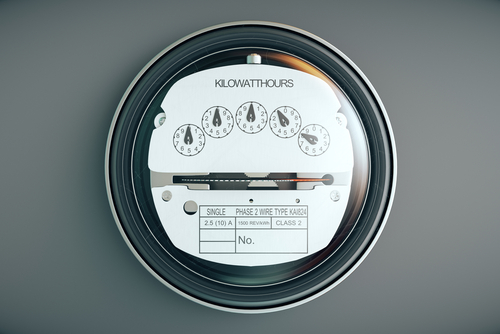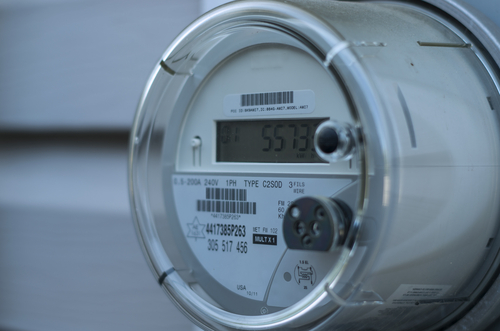Have you ever looked at the electricity meter on the side of your house and wondered how exactly it measures your electricity usage with all those dials and numbers? We’ll help explain just how that electric meter works, what it all means, and how you can lower your electricity costs alongside that.
The dials measure kilowatt-hours (seen as kWh on your bill, and elsewhere). From left to right, the numbers on the dial signify thousands, hundreds, tens and ones. Each dial is numbered from 0 to 9 and has a pointer. Every other dial is numbered counterclockwise. The pointers follow the direction of the numbers and they only move if your home is using electricity.
Ready to go out and try reading your meter for yourself? We have some tips to make it easy so you get an accurate reading and can make sense of it:
First, stand directly in front of the meter and not to one side. This is so you can clearly see the accurate location of every pointer. If you’re to one side or the other of the meter, the pointer may look like it’s in a slightly different spot than it really is. That slight difference can make your reading inaccurate.
Note your meter number.
Some meters have smart meters or digital readouts. If your meter does, use that readout as your meter reading. Of course, there will be some variance in styles between certain models and manufacturers – as you’ll see here:


Is the pointer between two numbers? Then read the number that the pointer just passed. For example, if the pointer is between 2 and 3, always read it as 2.
If the pointer appears to be exactly on a number, still read it as the next lowest number unless the pointer to its right has passed 0. Let’s say a pointer looks like it’s smack-dab on top of the 7, but the dial on its right hasn’t yet passed 0. Then you need to ready that dial that looks like a 7 as a 6. The exception is the far-right dial, as it has no dial on its right. Read that dial independently.
Gone and tried this yourself now? Congrats! You have read your electricity meter. But now, you’re probably wondering about what the numbers you saw actually mean, and how that’s reflected in your monthly bill.
When you’re trying to understand how much you pay for electricity, it’s important to break down your bill to a metric where you can compare your consumption to its cost. The easiest way to do this is to measure your consumption rate in the same way that your utility measures it. This is generally done on a monthly usage basis (with the exception of Budget Payment Plans). You should be able to take your total bill for electricity and divide it by the total number of the kilowatt-hours you used in that month.
As a simple example, a $200 dollar bill divided by 1900 KWH equals $0.105 cents per kilowatt for electricity. You can use that number to compare providers around you, and see who gives you the best rate!
And don’t worry, there are ways you can keep the dials from spinning quite as fast, or those digital numbers climbing any higher without sacrificing comfort or safety in your home:
Contact Discount Power to find out how we can not only help you save on energy costs, but also help you use green energy!